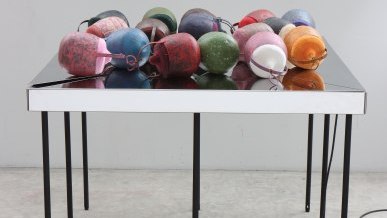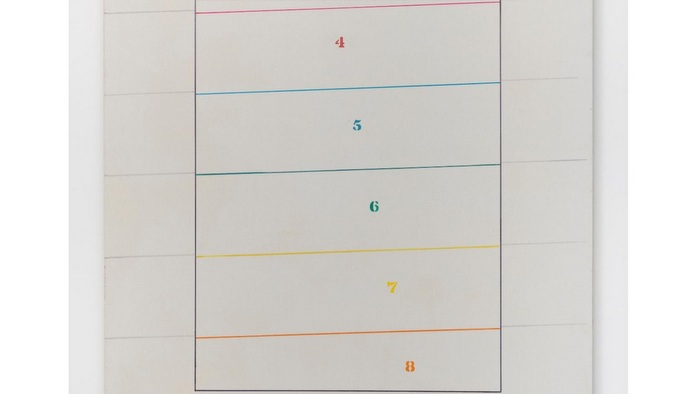The CAC Malaga presents the first solo exhibition in Spain of Maurizio Cattelan with works from the collection Fondazione Sandretto Re Rebaudengo. The exhibition curated by Fernando Frances is a selection of eight pieces tracing from his beginnings to the first decade of the XXI century.
Maurizio Cattelan is one of the most important contemporary Italian artists of today. His work emphasizes the use of a wide variety of materials, such as neon, trash and debris, polyurethane resin, photography and even stuffed animals. The artist uses irony to emphasize the social and political problems of his country, besides criticise the post capitalism and the environment in which contemporary artistic activity takes place. Currently he co-founded the visual journal Toilet Paper Magazine. The artist lives and works in New York. In this exhibition the Fondazione Sandretto Re Rebaudengo collaborates.
From October 3rd , 2014 to January 4th , 2015
"There are times when being outrageous or provocative can help draw attention to more fundamental problems," explains Maurizio Cattelan (Padua, Italy, 1960) when describing his work. It is one of the most important Italian artists who became known in the early 90's. Sculptures, photographs and installations make up his work. The exhibition presented by CAC Malaga will be seen eight pieces of the collection la Fondazione Sandretto Re Rebaudengo. This selection traces the path from his beginnings until shortly before actively retiring from the art world in 2011.
According to Fernando Frances, Director of the CAC Malaga. "Self-taught, his irreverence and anarchy marked his work pattern since his beginnings. He had contact with the arte povera and with artists such as Pistoletto, Muz, Fabro or Manzoni After exploring the design world, he made of the performance and installation his sings of identity, subverting the rules of art and reflecting on controversial issues, such as religion, capitalism or post-political conflicts in the country, in a subversive and humorous way. (...) the line between the comic and the tragic side cross paths in an attempt to establish a false balance, but sometimes the truth overcomes the other and it's time to see things as they are, without masks. Cattelan has removed the disguise and challenges us to do the same. The question is whether we are prepared. "
In the work of Maurizio Cattelan the viewer questions himself why there is laughter and humor that transcend in his work. In his approach he faces profound dilemmas about art, makes a social and political criticism of his country and also has autobiographical touches. Chronologically, the exhibition begins with a photograph of the performance historical Cesena 47 - AC Forniture Sud 12 (1991), held at the Gallery of Modern Art of Bologna and in which organizes a football match between two teams, one of them composed only by North African players. Thus, Cattelan uses the sport, popular in the Alpine country, to put the focus on the xenophobic conflicts that existed at that time in Italy. Racism as a source of conflict, but other issues such as the Mafia, are also reflected in his work. The work Lullaby (1994), made with rubble and garbage collected from the mob attack that hit the Pavilion of Contemporary Art in Milan in 1993, brings to light one of the most serious problems in Italy and gives visibility to these facts.
In the exhibition you can also find the work Il Bel Paese (1995) in which the idyllic image of Italy is reinterpreted in a very visual way. The piece is a carpet in which the label of a cheese and one of the most popular products of Italy are reproduced, as a stereotype of the country in which it is easy to imagine the mild climate and rich culture. However, being a carpet will be trampled by visitors who come to the exhibition, thus removing this idyllic version.
Religion is another source that inspired Cattelan. The neon with its name, which introduces a third T, points to the picture of the three crosses, either by the victims of the attacks mentioned above or because he wants to endorse the religious symbolism that alludes to the three crosses on Mount Calvary. Also in Christmas'95 (1995) Catholicism focuses the work because it is a neon with form of the Star of Bethlehem which introduces the emblem of the Red Brigades, armed struggle organization in Italy that arose in the 70s, whose symbol is a pentagram asymmetric star.
Autobiographical brushstrokes can be seen in the installation Bidibidobidiboo (1996), which depicts a stuffed squirrel who just killed itself prostrated on a table. The furniture refers to the house in which Padua grew up in and from where he left when he was18 years. The suicide of the animal represents the existential crisis of transition from adolescence to adulthood. Melancholy and sadness that means leaving behind other facets of life.
Neither the art world is exempt from his particular sarcastic interpretation. The Rivoluzione siamo noi (2000) is composed of a figure with his face, dressed in a felt suit typical of the German artist Joseph Beuys, who is hanging on a rack installation. In this piece, Cattelan seeks to strip of mysticism and divismo everything around contemporary art.
A more recent work Untitled (2009), which consists of a sculpture of a hand making a gesture known worldwide and is a critique of capitalism after the most powerful nations of the world.
Patrizia Sandretto is the president of the Fondazione Sandretto Re Rebaudengo and one of the leading collectors of the artist's work. "The chance to check all these works together is a rare opportunity to reflect on the critical role Cattelan occupies in the history of contemporary art, and yet an emotion always new, for me is a real pleasure to share with the museum audience, "she explained on the CAC Malaga exhibition.
Maurizio Cattelan was born in Padua (Italy) in 1960 His background is self taught. His early works are drawings, photographs and design elements. Although he begins working in the art world in the 80s, his early works date from the early 90s, when he moved to Milan. Besides being an artist, he has worked in other creative areas: collaborated with the newspaper in the art section and is currently co-founder of the visual journal Toilet Paper Magazine which contains conceived and photographed images by Cattelan and Pierpaolo Ferrari. In addition to his known retrospect All (2011), in which he actively said goodbye to the art world in the Solomon Guggenheim Museum New York, highlights other solo exhibitions in the past decade in museums such as the Center for Contemporary Art Poland (2012); in Palazzo Reale Milan (2010); in Museum für Moderne Kunst in Frankfurt (2007); in the Musée du Louvre in Paris (2004); at the Museum of Contemporary Art (MOCA) in Los Angeles (2003); in the MCA, Museum of Contemporary Art in Chicago (2001) and in the "Forum", Centre Georges Pompidou in Paris (2000).

Source: Centre for Contemporary Art in Malaga
Related Publications

Galerie Lelong & Co.: Pinaree Sanpitak
November 01, 2024
The Art Show: Castelli Gallery
October 31, 2024











